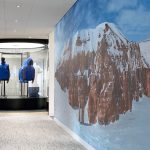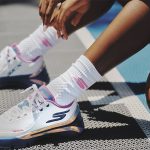Robert J. Corliss is president and CEO of The Athletes Foot, the worlds largest franchisor of athletic footwear. Corliss joined TAF in 1998, following a successful 25-year career as an executive and entrepreneur in the retail industry. In 2003, Corliss, along with members of the senior management team, purchased The Athletes Foot from Group Rallye.
Prior to joining The Athletes Foot, Corliss was the founder, president and CEO of Infinity Sports, Inc., a manufacturer, distributor and licensor of athletic products primarily under the brand Bike Athletic. Earlier experience includes leading the successful turnaround and eventual sale of Hermans Sporting Goods as President and CEO.
Corliss serves on the Board of Directors with The American Running Association and the Sporting Goods Manufacturers Association. Additionally, Corliss serves as a Director and Executive Committee member of the National Retail Federation and Chairman of the National Retail Federation Foundation. He also serves on the Board of Directors for The World Federation of the Sporting Goods Industry and is both an Advisor and Adjunct Professor for Emory Universitys Goizueta Business School.
SEW: Its been a little over 100 days since you and your team acquired The Athletes Foot from Rallye Group. What key obejectives have you met in your 100 day plan?
BC: Thats a big question to start off with, but our plan is to sit down after the first six months, literally the end of June, and examine all aspects of the business and hopefully have some more visibility and clarity to the business. We are not trying to set the world on fire in the first six months.
One of the first priorities was to communicate, with our associates, our vendors and our constituents to let them know, number one, that we had purchased the company from Rallye and that it would be business as usual.
We were also inclined to share more about the financial condition and capital structure of the company, to provide an added degree of comfort.
SEW: What are your long-term objectives?
BC: Our franchise business is growing very rapidly internationally and is growing very well in the U.S. as well. For corporate stores, we have made it very clear that our main strategy is to in-fill in the I-95 corridor where we have proven we have good market density in all the major markets up and down the East Coast.
SEW: We keep hearing that the strategy for TAF was to become a franchise-only format. Thats not the plan?
BC: It just isnt true. The company has had a number of fits and starts over the last 20 years trying to decide on corporate stores versus franchise stores. The company started out as one location and immediately started to franchise. Its always been a parallel strategy.
Several years ago, it was decided that we would very aggressively grow our corporate stores and it wasnt that successful, we had about a 50% success rate. At the same time, we renewed our emphasis on growing the international franchise business where we absolutely, in those markets, dont have any vision of becoming anything but franchise.
Domestically, we have had a lot of growth in both corporate stores and franchise stores and we will be opportunistic in the marketplace.
SEW: Do the franchise deals last year in Houston and Tennessee signal a new strategy for franchising in the U.S. outside of the Northeast?
BC: No. Both the Houston and Tennessee models are relevant, and again its about being opportunistic. Tennessee took a page out of the international model, but Houston was a situation where we had a good franchisee looking to expand.
SEW: So where is the biggest franchise opportunity? International or U.S.?
BC: In my view, the single largest opportunity for growth — corporate or franchise — is still in the U.S.
SEW: You were really first to the party in Eastern Europe. Has Foot Lockers recent focused growth there impacted your franchise businesses?
BC: Well, I think it says two things, one theres a market there, and two, there will be competition. It illustrates that the market is robust. Our models are significantly different. We have local owners with tentacles into the local market. the additional competition is good and shows that there is a lifestyle adjustment taking place.
SEW: We you surprised by Foot Lockers side deal on the Footaction auction?
BC: I think until April 21st, I dont think we know what will happen. They pick up a half billion dollars in business for $160 million. Doesnt sound like a bad deal.
SEW: Did you look at the Footaction stores?
BC: Yes, as I said we will always be vigilant and opportunistic in the marketplace where it makes sense. We have the support of the financial community. We feel we have the infrastructure to absorb additional stores or acquire companies and we feel we believe we have the capability to execute an acquisition.
SEW: So what was your take?
BC: Timing, price and scale all come into this particular round with Footstar. It was on a very tight timeline shortly after the acquisition the management made here. It was fraught, in my estimation, with a lot of question marks about recent performance of the company because it was hard to get your arms around it. It made it very difficult for us to confirm it was the right course of action.
SEW: Recently, the New York Post (that pillar of American finance) did a hatchet job article on The Athletes Foot relying on input from a guy that claims you wont share your financial information with his credit reporting agency. Care to share you thoughts on this?
BC: We have not in the past, not today, and have no plans in the future, given information to credit reporting agencies. They have a place, but not for us. If we were running a business with 500 vendors it might be different. We dont believe we have a need to do that. We should not lose sight of fact that we have had a relationship with a dozen vendors for more than 30 years.
At the last WSA show, we held a reception for vendor presidents, CEOs and top credit people — over 60 people — and got into information in a little more depth with a lot more visibility. We had our own financial day to communicate with and educate people we value. Thats never happened before in TAF history.
I found the article to be factually incorrect.
SEW: Changing subjects a bit, you've been on the SGMA board now for about six months. How do you see that organizations new focus on the retailer? To create more of a standard industry organization?
BC: I dont see it as an opportunity for the SGMA to help the retailer. I view it as SGMAs attempt to get input from an important part of the supply chain, specifically the retailer, to help this industry get back to what it once was, back to a place where there was a sporting goods community, which doesnt exist today.
Right now the industry is highly fragmented. Its pretty much self-interest, and for maybe all the right reasons, but at the end of the day, a lack of community and a lack of focus as an industry sort of leaves people to their own devices and Im not sure thats a good thing.
We need to get back to driving the business. The only way to do that is put all the interested parties in a room and define the priorities we need to agree upon to drive this industry, affect public policy and change peoples behavior.
Right now, were stuck.














